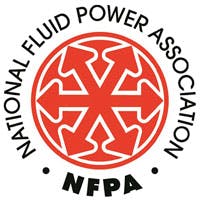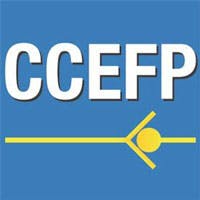Eric Lanke, CEO of the National Fluid Power Association (NFPA), explains that many people are surprised when they learn that a group of fluid power industry professionals—not academia—provides the majority of input for deciding which potential fluid power research projects will receive funding. The research projects are administered by the Center for Compact & Efficient Fluid Power (CCEFP), and the industry professionals make up CCEFP’s Industry Engagement Committee, which elects its own leadership.
Lanke says that since the NFPA began providing financial support for CCEFP, seats on the Industry Engagement Committee have been extended to silver and gold donors in the Pascal Society, which combines financial and volunteer contributions into one concerted effort to develop the resources, tools, and people needed to take on research projects. Once the IEC selects the research topics, and the various proposals aligning with those prioritized topics have been submitted, the committee’s second major responsibility comes into play: Reviewing and selecting those that will actually receive funding.
“The committee first aligns industry reviewers with the appropriate expertise with each corresponding cluster of research proposals,” says Lanke. “Industry professionals involved in pneumatics, for example, should not be asked to review research proposals involving hydraulics, and vice versa. So a fair amount of sorting goes on, ensuring that reviewing of proposals is divided equally among the committee members, and that each committee member reviews the proposals clearly within his or her field of expertise.”
The review criteria consist of 15 areas divided into three major sections:
Alignment—How well-aligned is the proposal with the goals and objectives of the CCEFP? Does it represent a fundamental advance in fluid power knowledge and understanding? Does it function at a systems level? Does it strategically fit with the CCEFP’s other projects, and can it be demonstrated on one of the CCEFP’s test beds?
Risk—How likely is it that the proposal will be successful? What are its metrics? Are they appropriate? Are there clear deliverables upon successful conclusion? What are they? Is the research team up to the task? Is the budget appropriate for its scope?
Reward—If successful, how broadly applicable will the results be to the fluid power industry? How likely is the industry to participate in the proposal execution? How novel is the breakthrough? Does the research team have sources of external support for potential continuation into commercialization?
Based on these recommendations by the Industry Engagement Committee, CCEFP Director Kim Stelson selects and approves the new research projects. The result of this process, between December and March of this year, culminates in the selection of 10 research projects awarded for funding for the next two-year cycle.”
Projects selected for the current cycle include:
AC Hydraulic Pump/Motor—Although a high percentage of electrical systems are alternating current, virtually no hydraulic ac systems are available. This project will model, design, prototype, and experimentally characterize a novel pump based on ac hydraulics for the application of displacement control.
Simulation, Rheology and Efficiency of Polymer Enhanced Fluids—This project will bridge the gap between the fundamental behavior of polymer-enhanced fluids and the performance of complex fluid power systems.
Four-Quadrant Multi-Fluid Pump/Motor—This project will develop a high-efficiency, mechanically controlled, four-quadrant pump/motor capable of pumping oil, water, and corrosive fluids.
Hybrid MEMS (Microelectromechanical Systems) Proportional Fluid Control Valve—Extremely efficient pneumatic proportional valves will be created by exploiting piezoelectric technology.
Portable Pneumatically Powered Orthoses—This project will drive the development of enabling fluid power technologies to miniaturize fluid power systems for use in novel, human-scale, untethered devices in the 10- to 100-W range.
Investigation of Noise Transmission through Pump Casing—This project will model the transmission of the vibrations from a swashplate-type axial-piston pump through the pump’s casing to the generation of acoustical noise in the surrounding environment.
Control and Prognostics of Electrohydraulic Machines—The control approach for load handling hydraulic machines that combine oscillation damping features with system prognostic functions will be formulated.
Free-Piston Engine Based on Off-Road Vehicles—The design, control, and testing of a hydraulic free-piston engine will be investigated for off-road vehicles to improve fuel efficiency and reduce emissions.
Controlled Stirling Power Unit—This project will develop a completely silent, high-energy, dense, and portable fluid power supply using a Stirling device.
For more information on the CCEFP and topics discussed here, visit www.ccefp.org.





